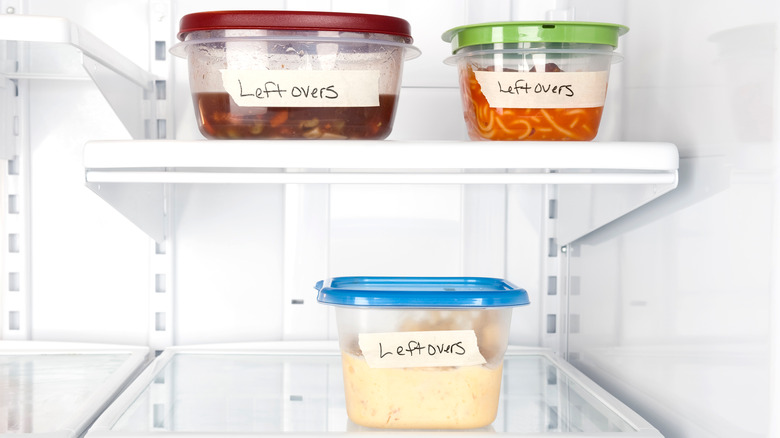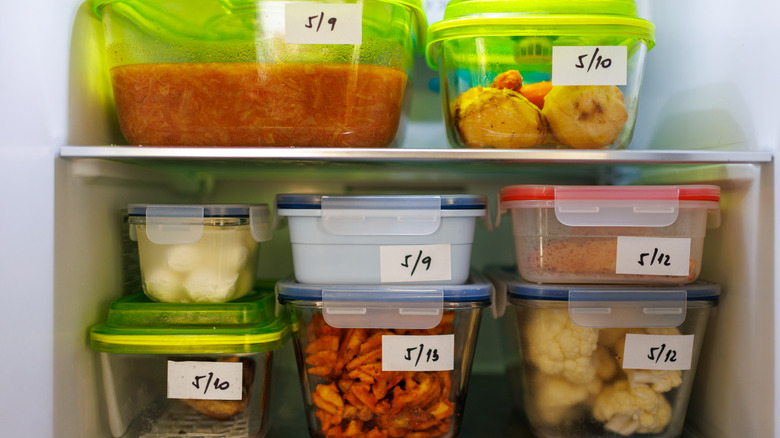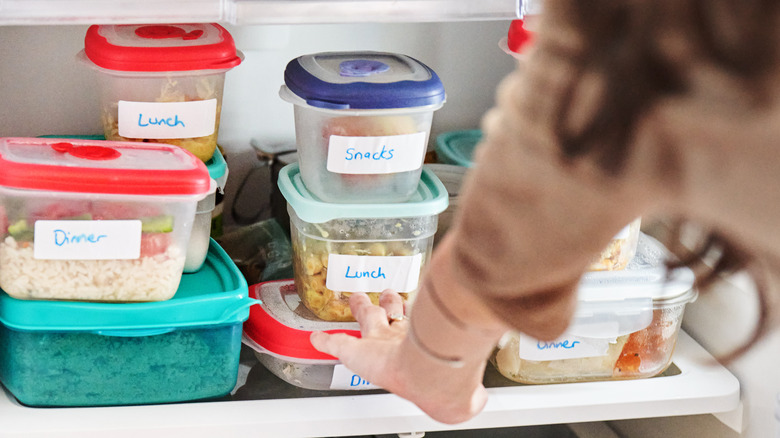The Leftover Myth That We've Been Believing For Far Too Long
Do you put leftover food away right after dinner, or do you let it cool down a bit first? Both choices come with their own perks and drawbacks, but one is associated with a food myth that you've probably believed for far too long — it's important to let hot food cool down before putting it in the refrigerator. In actuality, perishable foods, like meat and cooked vegetables, should not be left out at room temperature for more than two hours, according to the Mayo Clinic. This is because bacteria can start to grow on them once they get too warm. In warmer temperatures, leftover food needs to be stored even faster to ensure that it stays fresh.
Foods that have been left out for longer than the recommended time should be discarded, as they may be contaminated and can cause food poisoning. If you really want to save your leftovers, it's perfectly fine to store hot food in the fridge, and it's no more risky than letting food sit out on the counter for hours waiting to cool.
Where did this myth come from?
But where exactly did this myth come from? It may be the fact that putting hot food directly in the fridge can potentially raise the temperature inside of it, which could then lead to bacterial growth inside the food you are trying to store, as well as possibly contaminating other foods in the fridge. According to Home Depot, the ideal internal temperature of a fridge is between 35 and 40 degrees Fahrenheit. This temperature range helps to slow the growth of bacteria in perishable foods, keeping them fresh for longer.
Anything above this, you're entering the "danger zone" for food temperatures. The danger zone is between 40 to 140 degrees Fahrenheit, according to the USDA, and that's the range in which harmful bacteria can grow most rapidly. Within this range, bacteria can double in number every 20 minutes, which means that food left in this range for too long can become unsafe to eat. It would take a large amount of hot food to warm your fridge above 40 degrees for too long, though, and the fridge will help to cool hot food faster than leaving it out on the counter at room temperature.
Cooling food quickly and storing it properly
If you still want to cool your food before sticking it in the fridge, there are ways to ensure that it cools faster. First, you can try dividing large portions of hot food into smaller, shallower containers that allow the food to get more air and release more steam in a shorter amount of time. You can also try placing the hot food in a container, then placing that container in a tub of ice or a shallow bowl of cold water. If you choose either of these methods, set a timer and check the food every 5-10 minutes to see if it has cooled off enough to place in the fridge.
Once the food has cooled, place it in an airtight container or a plastic bag that's suitable for the fridge or freezer. Make sure to label the container with the name of the food and the date it was cooked so that you can determine if your leftovers are still good to eat. Store the container in the fridge or freezer as soon as possible. Be sure to place it on a shelf, and not in the door, as the inside of the fridge door sees more outside air, and therefore it has the most temperature fluctuations.


